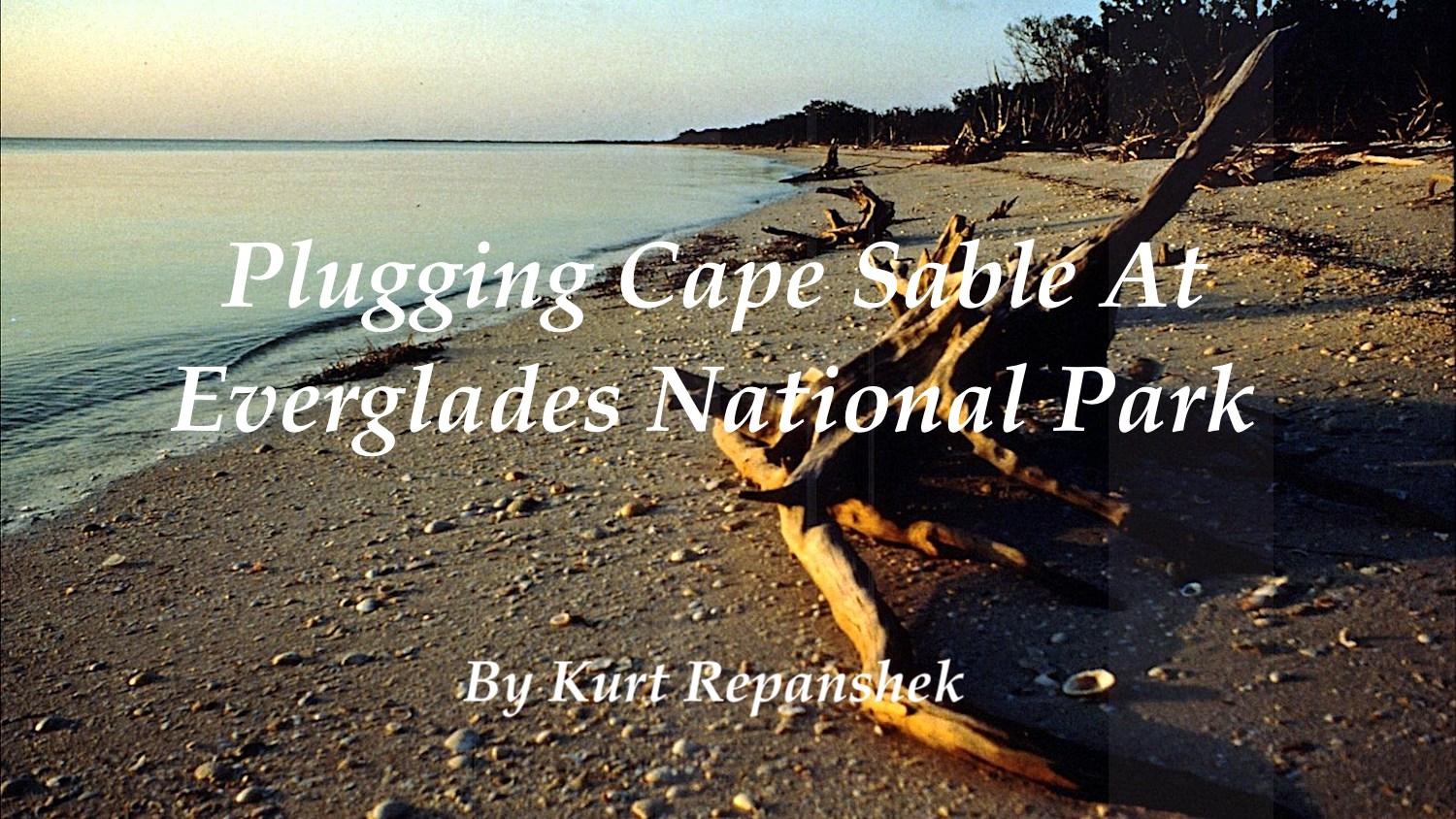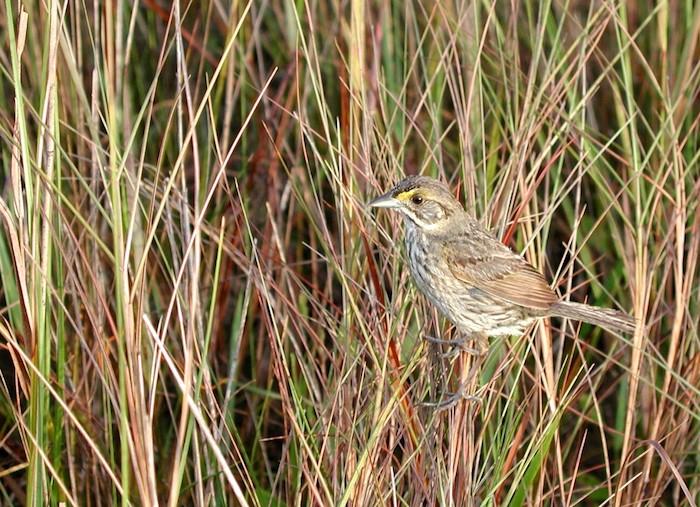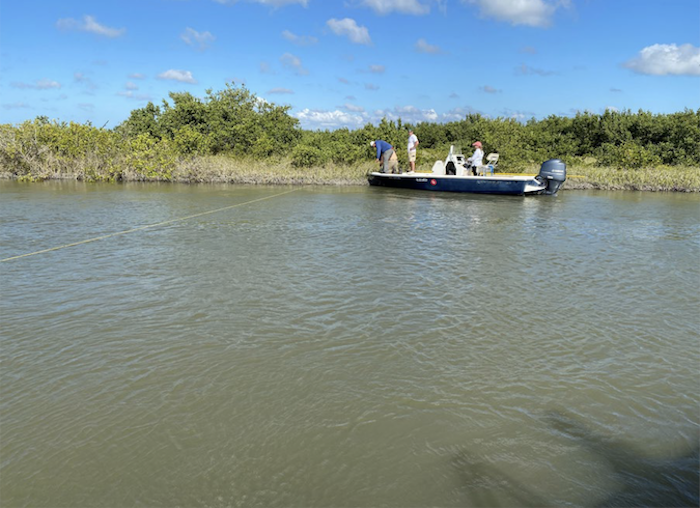
William Krome knew exactly what he was getting into as he prepared to survey the very southern tip of Florida for a possible rail line from Miami to Cape Sable, and he didn't mince words when seeking workers for the task.
"[U]nless you are willing to stand extreme privations, endless discomfort and hard work in a region that even the Seminole Indians shun and which no white man has ever penetrated, don't monkey with this job," he wrote one candidate. "Every man whom I have with me knows that if he is one of the party who goes into the Glades that there is a very decent possibility of his never getting out."
Krome's survey at the dawn of the 20th century was but one of the initial attempts by entrepreneurs to tame for profit that section of the Everglades. It was a bold endeavor, one the survey prepared for by stocking "considerable quantities of condensed food and emergency rations." Krome also made sure to have on hand "[A] surgical kit containing several lancets, scissors, forceps and flesh needles and a twist or two of silk," the latter to stitch wounds. He also carried along "[S]mall pocket cases each holding a hypodermic syringe and two small phials ... filled with a 10% solution of permanganate of potash and the other with 1/50th grain tablets of strychnine, as an antidote for snake bites..."

Cape Sable once provided habitat for the endangered Cape Sable Seaside Sparrow, but saltwater intrusion from various sources and events ruined it/NPS
The survey ran from December 1902 into June 1903, and upon his return the surveyor noted that "[T]he most serious obstacles encountered were the heavy muck and dense sawgrass of the Everglades. And the jungles and mosquitoes of the White water Bay region. The muck with proper drainage will eventually become fine farming land and the mosquitoes will disappear to a great extent as the country opens up."
But his sweat and blood given up to mosquitoes went for nothing, as railroader Henry Flagler concluded in the end that his dream of extending the Florida East Coast Railway from Miami to Cape Sable to reach Key West was unrealistic. Still, visions of taming the cape were hard to let go. In the 1930s, a number of canals were dredged with hopes of draining the "river of grass" there to make way for agriculture, cattle ranches, and other development.
When Everglades National Park was established in 1947, Cape Sable and its canals came into the park, talk of development ended, and work began in the 1950s to plug the canals. But the earthen dams didn't last, and the canals allowed seawater from the Gulf of Mexico and Florida Bay to flow onto the cape and contaminate the freshwater wetlands, ponds, and lakes.
In 2010 the Park Service approved plans to replug the canals with roughly $12 million obtained through the American Reinvestment and Recovery Act. Come forward a dozen years from that decision and just one canal remains to be plugged. Late this year work is expected to begin to complete the task, a project that is expected to help the ecosystem rebound from human interference.
A Wonderfully Rich Ecosystem
For 30-some years Jerry Lorenz, PhD., director of Audubon's Everglades Science Center, has been studying environmental processes on Cape Sable. It is, he says, one of the most biologically robust areas of the Everglades thanks to its freshwater wetlands and its remoteness.
"This has always been one of the great areas for wading bird foraging and nesting. So there were always millions of the birds that we see, that we associate with the Everglades, that used this habitat while they were nesting in Everglades National Park," he said. "Now, the habitat itself is a wetland. It's very shallow. There are some deeper water lakes that are a whopping five or six feet deep. But for the most part, it is a shallow wetland, and this wetland, it's expansive. During the wet season, you have these prey-base fishes, the things that everything else eats, including the crocodiles that live out there, that expand over this huge area and then reproduce. So you've got real short generation times and real high fecundity. So the population explodes during the wet season."
When the dry season arrives, deep pools of water that remain across the landscape corral the prey, and the predators descend upon them.
"The wading birds and the game fish and even the crocodilians, birds of prey, will come in and feed on these fish that are highly concentrated. So, it's not only productive in the sense that you know, it produces a lot of life that is then basically consumed by the larger animals that people so much care about and want to see, but it also creates a rich mangrove habitat that sequesters carbon. Honestly, one of the most amazing things about it, is the things that I see when you go out there. It's very remote, it's very hard to get to, and it's, quite frankly, very inhospitable," said Lorenz, who recalled one visit during which he was covered with mosquitoes and could barely see through the head net he was wearing. "The mosquitoes can get to the point of almost driving you insane," he said.

Cape Sable provides important nesting habitat for American crocodiles/NPS file
Beyond the fish, birds, and crocodiles, the cape is home to saw palmetto and cabbage palmetto, mangroves [black and red], a variety of orchids and ferns, prickly pear and other cacti, cypress trees, and, of course, sawgrass. Because Cape Sable is so remote, because it is protectively isolated from humans, wildlife often ignores intruders.
"After working in the Everglades for 30 years, the most remarkable things I've ever seen, I've seen on Cape Sable," he said. "The amount of wildlife, and it's not used to people and so it's rather fearless. I used to be able to approach in my kayak or my canoe within a couple of feet of foraging wood storks and spoonbills, and they just stare at. So it is quite the remarkable place. There's a lot of reasons to preserve this habitat."
There also were many groups interested in seeing the habitat restored and protected, from the Audubon Society and The Everglades Foundation to Ducks Unlimited, the U.S. Fish and Wildlife Service, and the Florida Fish and Wildlife Conservation Commission.
“For decades, Everglades National Park has suffered as a result of changes to the delicate balance of water flow that once dominated the river of grass ecosystem. The ongoing work to restore the natural landscape of Cape Sable is an important piece of the Everglades restoration program," said Cara Capp, senior Everglades program manager for the National Parks Conservation Association. “The Cape Sable project is about restoring the park from the inside out – and when this project is complete, we’ll be closer to being able to explore and experience the natural Everglades as it existed before the damage of human development took its toll.”
The Everglades Foundation played a key role in securing the necessary funding for this project. The Foundation prepared the grand application that helped secure the $2 million National Fish and Wildlife Foundation grant and donated the $143,000 directly to the national park so it could conduct the environmental assessment for this work in 2016. The Foundation also was instrumental in securing the 2009 ARRA funding from the Obama Administration to begin the plugin efforts on the Homestead and East Cape Canals (completed in 2011).
"Cape Sable is the shield that protects the southwestern tip of the Florida Peninsula. The cape is comprised of an incredible expanse of beach, large mangrove forests, and coastal lowlands that support world-class fisheries and a number of threatened and endangered species," said Dr. Steve Davis, Chief Science Officer of The Everglades Foundation. "However, its health is being undermined by canals that were dug nearly 100 years ago. With sea-level rise and saltwater intrusion, these canals have eroded greatly and led to the collapse and loss of freshwater marshes that represent the heart of the Cape. Plugging these canals will slow erosion and allow for the restoration of freshwater habitats, thus building resilience to storm surges and further sea-level rise."
Better Plugs
Preservation has moved ahead, in terms of better damming up the canals with concrete, fill, and boulders.
"There's a ridge that ran along the between the marine environment and what was a freshwater environment. And that ridge is known as the Coastal Prairie Trail, or the Coastal Ridge," Lorenz explained. "More specific, it's been called the Flamingo Ridge. And so this is kind of an upland that separated the inland wetlands from the marine environment. That was kind of the tidal block. And all the canals punctured that Coastal Ridge. And so what we're doing with these dams is building them to the surface to match the surface of that coastal berm. We're actually putting back what was the natural barrier."
Without the work, erosion would continue to expand the size of the canals. When the Park Service began looking at the need to replace the 1950s-era earthen dams with sturdier concrete structures, erosion had widened one of the canal mouths from 20 feet to more than 250 feet, leading to "a substantial loss of coastal habitat," the agency noted in 2010 when it approved the replugging work.
"The expansion of these canals has exacerbated sediment deposition in the cape's open waters and is converting Lake Ingraham into a tidal mud flat," the Park Service said. "The freshwater ecosystems of Cape Sable have changed substantially from exposure to the sea. The incursion of saltwater into formerly freshwater marshes because of the canal building and sea level rise has led to the physical collapse of these marshes."

Erosion has widened the Raulerson Brothers canal to more than 75 feet wide and 11 feet deep/Everglades Science Center, Alexander Blochel, December 2021 photo
While projections acknowledge that sea-level rise will top this ridge, the scientist said the engineering of the dams will allow water to drain back out.
"The vision is that when the sea does crest, it'll go as a sheet tide across that ridge," he said.
As such, the expectation is that by plugging the canals, it will delay the conversion of the freshwater ecosystem inland of the barrier to a saltwater ecosystem. Still, Lorenz understands those who question whether it's worth the cost to plug the canals if sea level rise is only going to overcome them. Already, he said, since 2000 sea level rise has left six more inches of water in areas of Florida's southern coastline.
"The question becomes is why are we spending all this money? And the whole point of it is, if we leave those canals where they are, the damage will be catastrophic, meaning it will happen very suddenly," said Lorenz. "And what you want to have happen is the damage from sea level rise, it's coming, and Cape Sable eventually will be under water. But if it happens at a gradual pace, rather than a catastrophic pace, then the organisms that live there will basically move upstream. A as their habitat gets pushed in, the animals and plants will move with it. ...If that gets hit by a hurricane, if we don't have those canals fixed, that will end Cape Sable now, whereas if we have a gradual thing when a hurricane hits, it will recover. It won't recover exactly the same, but it will recover."
The task has not exactly been straightforward. Since Cape Sable is within the Marjory Stoneman Douglas Wilderness, which at 1.5 million acres is the largest official wilderness area east of the Rocky Mountains, a lengthy environmental assessment had to be prepared to assess the impact of the project. Part of the requirements for the work was that all the materials -- concrete, fill, steel -- needs to come in from the ocean. Shallow-draft barges were used both for that and to house workers.
The dams are constructed with rock riprap "wings" that extend out from the dams both upstream and downstream to prevent water from pushing around the structures.
"The Wilderness Act makes it very difficult to do much of anything as far as structures go," said Lorenz. "The Wilderness Act really does not like structures. But in this case, if we don't do it, the wilderness will no longer exist. And so the need for these plugs on these manmade canals is very important."
When the work is done, sometime next year, it is expected to benefit not just Cape Sable but the entire Everglades ecosystem, he said.
"It will have a more local impact on the Cape Sable area, meaning that the wetland that this will assist is Cape Sable. But it also means that the larger Everglades restoration, which is basically from, you know, Orlando to the reef tract here in the Florida Keys, there are many projects that focus on just one part of that. It's not an ecosystem, it's a landscape," Lorenz explained. "And Cape Sable is a very important part of that landscape. And so basically, we're trying to keep the habitats, the individual quote unquote, ecosystems within the Everglades, we want to keep that mosaic intact, and we don't want to lose pieces of it. That's where Cape Sable looks in the larger picture."
Nesting and foraging habit for ducks and wading birds will improve. Benefits will flow to the endangered American crocodile. Fisheries and the economic impact they bring to Florida also will benefit, according to the scientist.
"This has a huge economic impact as well because the the fish that use that wetland as a nursery habitat are things like redfish and snook and tarpan, and all these game fish that people from all over the world come to the [Florida] Keys to fish for, that is their nursery habitat," he said. "This is primary habitat for for juvenile goliath grouper. We see little three-inch or four-inch goliath grouper that as an adult might be six, seven hundred pounds. The ecology is critical to the national park, to the wilderness."

Comments
Thanks for this story. This is important work. We will need to be doing more and more of this kind of environmental restoration work as we deal with the mistakes of past generations who thought they knew better than nature. Glen Canyon Dam is another example of the mess that 20th century developers have left people in the 21st century to clean up.
It's good to hear Cape Sable is finally getting much-needed restoration. Fifty years ago, Everglades National Park Superintendent Joe Brown directed me to survey the canals on Cape Sable and recommend a course of action. In 1972, as the park's first marine biologist, I submitted my report recounting the history of the canals. I recommended the canals all be closed immediately to restore the ecological integrity of the coast and adjacent freshwater marshes and estuaries. A water control structure was eventually installed on the Buttonwood Canal at Flamingo that reduced saltwater intrusion but fell short of restoring ecological integrity to coastal wetlands. Nature conservation is a long game played with patience and persistence. The race may go to the swift, but the future depends on the steadfast yeomen in the trenches. At least eight park superintendents in succession labored on behalf of Cape Sable to get to this point. We can hope no more need to spend time and treasure to right this mistake. It's time to move on.